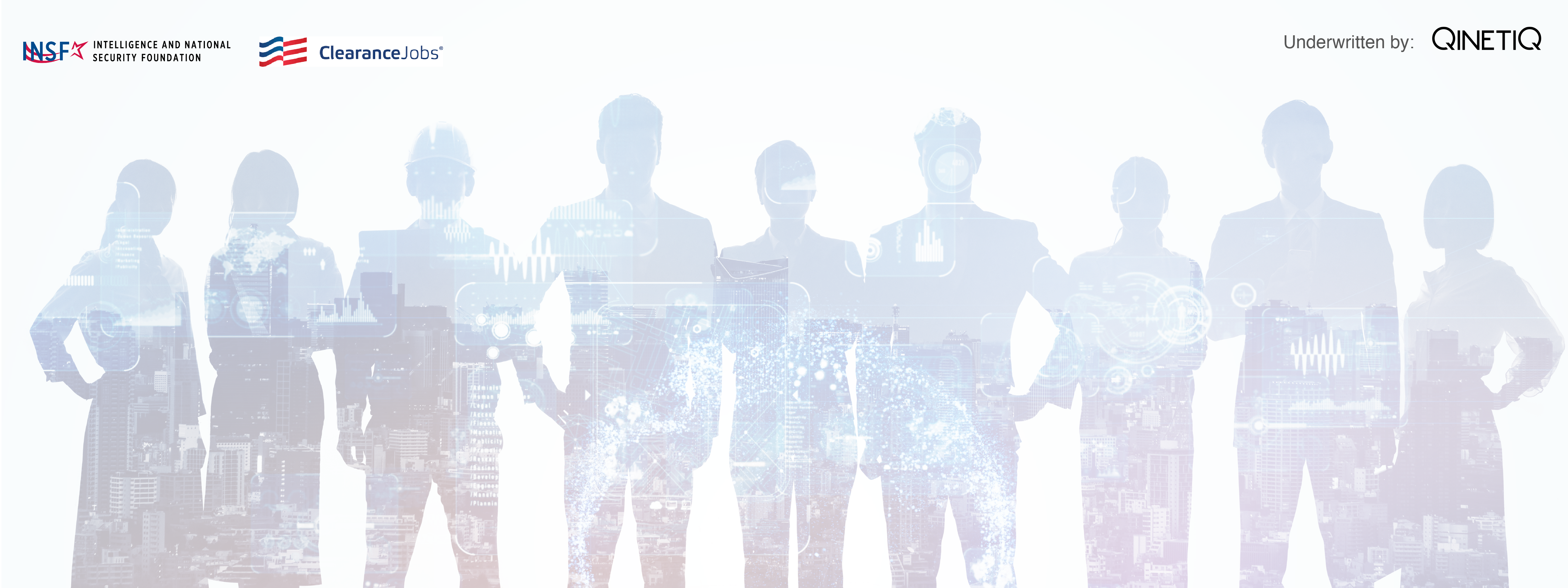
Open Source: Tradecraft and Data
October 13, 2023 2:00 PM to 3:00 PM
On Friday, October 13, the INSA Foundation (INSF) held the final installment of the 2023 "The Future of the IC Workforce" webinar series focused on the use of Open Source to Gain Information Advantage. Underwritten by QinetiQ US, the discussion between Randy Nixon, Director, Open Source Enterprise, CIA and Corey Vitello, PhD, Senior Director, Global Security & Workplace Solutions, Roku, was moderated by Lindy Kyzer, Director of PR and Content, ClearanceJobs.com.
View event recap courtesy of QinetiQ
The program kicked off with Mr. Nixon describing how until recently, information abundance was one of the greatest weaknesses in the open-source world. He noted that "we collect such a vast volume of information" from foreign sources to such a scale it was impossible for mission partners or customers to read it all. However, with the use of AI tools, we are now "in a renaissance" when it comes to open source capabilities. Mr. Vitello agreed with this assessment and noted that in the private sector, "security is a business unit" and our role is to help our company flourish economically. So, having access to a plethora of information and distilling it to useful and actionable intelligence provides a competitive advantage over its rivals.
Next, Mr. Nixon discussed how the CIA integrates open source and classified information. He emphasized the importance of "building connective tissue" and that CIA analysts sit side-by-side the operators, analysts, and warfighters to bring their INT expertise to the all-source mission, both here in Washington, DC, and the field. This is the "number one way to get really smart connections. It's the people with technology."
Conversation turned to challenges in tradecraft (for example, two-factor authorization) and ethics and transparency (Mr. Vitello noted that the technology sector does not want to be seen as big brother, "we don't openly monitor" and the entire company knows what we are doing. Premium on transparency.)
Mr. Nixon discussed CIA's role as functional manager of OSINT, noting, "we are in charge of working across the community in a federated manner to have shared data, tradecraft, tools, techniques and training. So we are moving in a single direction." He shared some early successes including the development of a joint IC OSINT strategy.
Regarding gaps, Mr. Nixon said his primary challenge is getting outside the 18 IC agencies. When trying to get information out to broader USG, and law enforcement, they are not on CIA systems. "We need a better identity management system" so other parts outside the IC can access their information sources.
When discussing private sector engagement, Mr. Nixon discussed the agency's expanded openness in recent years. He shared an email address, DF-engage@ucia.gov, noting "we have means for you to work with us that are far easier and faster than we ever had in the past." He discussed the broad agency announcement, Digital Hammer, where CIA posts unclassified challenges and give 30-45 days for industry to send white papers. We review quickly and a smaller subset are asked for a proposal. A normal contract can take years...now, with this process, it can cut down to 60-90 days.
In closing, there was agreement that human machine teaming is a disrupter, and as more tools become available, we can get away from more time consuming work and focus on the more difficult parts of OSINT. Mr. Nixon noted that "people are going to look back at end of FY23/early FY24 and see it as a turning point. A historical marker that was laid down for what OSINT can do."

Hosted by:
Agenda
INSF is partnering with QINETIQ on a three-part "2023 Future of the IC Workforce: Gaining Information Advantage" webinar series. Through this year long effort, INSF will bring together private and public sector leaders to discuss key factors affecting the intelligence community's ability to maintain information advantage over its adversaries.
Underwritten by:

QinetiQ US is a leading defense and security company in the United States providing mission-led innovation at pace. As a provider of technologically advanced services and products to the US Department of Defense and national security agencies, QinetiQ US is positioned to deliver key aspects of the modernization required to address our customers’ pivot to counter near peer adversaries. QinetiQ’s engineering services span the DoD and Intel community providing subject matter expertise in the areas of communications, sensor integration and research and development, survivability, and unmanned ground combat systems. QinetiQ US is creating new ways of protecting what matters most; testing technologies, systems, and processes to make sure they work as expected; and enabling customers to deploy new and enhanced-existing capabilities with the assurance they will deliver the outcomes required. Please visit our website at https://www.qinetiq.com/en-us/ and follow us on LinkedIn, Twitter, and Facebook @QinetiQUS.
